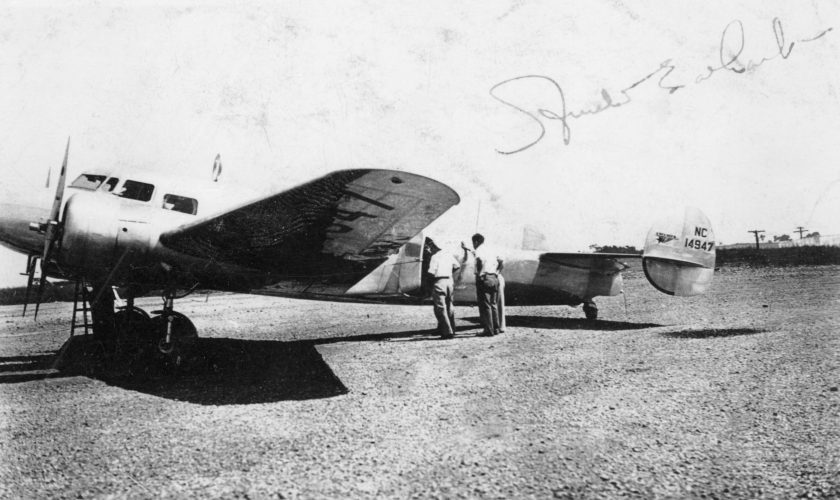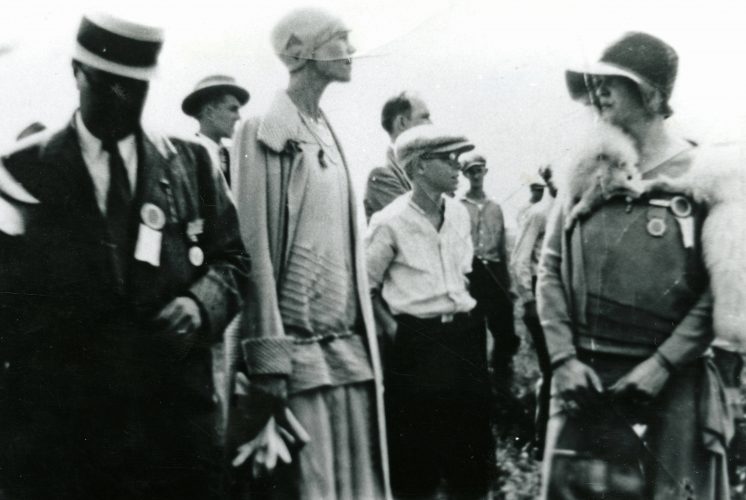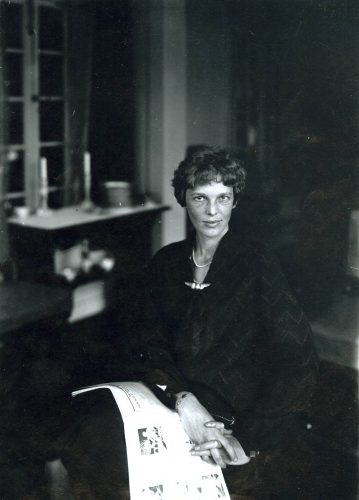“There’s More to Life Than Being a Passenger:” Amelia Earhart’s Transatlantic Flight

On March 23, 1932, the North Canton Sun reported on an essay contest sponsored by the Cleveland Institute of Aviation and the Cleveland Airport (bottom of page 8). Jack Berry, the manager of the Cleveland Airport, was quoted as saying “there’s romance in aviation. We want to see how much brains the boys and girls can put in it.” Amelia Earhart was a judge for the essay contest. Her one stipulation to judging: that girls should have as fair a chance as boys at winning the prize: flight lessons valued at over $1,000.
The North Canton Sun didn’t report the winner of the contest, nor did any other Ohio newspaper. But Amelia Earhart’s wish, that boys and girls both have a fair shot, was a leading motivator throughout her entire life, fueling a drive that resulted in her being the first woman

to fly solo across the Atlantic in May, 1932.
Earhart hadn’t always been interested in flying. Of the first airplane she saw, she said “it was a thing of rusty wire and wood and looked not at all interesting,” (please note that this link will take you to a website not affiliated with Ohio Memory). While a college student in 1920, however, she had the opportunity to take her first ride in an airplane, and she was hooked. A year later, she and her father approached Neta Snook, the first woman to own a flying school, in the hopes that Snook would teach her how to fly. “The agreement between Amelia and her parents,” according to the Ames History Museum, “had been that only a woman pilot could teach her” (learn more about Snook here; link will take you to a non-affiliated site).
By 1925, Earhart bought her own plane and soon set her first record: the first woman to fly at 14,000 feet. A few years later, she became the first woman to cross the Atlantic by plane, though someone else was manning the controls. Earhart, however, is quoted as saying that “there’s more to life than being a passenger.” So, on May 20, 1932, she set out to be the first woman to fly solo across the Atlantic.

She took off from Newfoundland in her red Lockeed Vega (see a picture of it here, at the Smithsonian Air and Space Museum), spending 15 hours in the air and traveling 1,950 miles. Initially, her planned landing spot was Paris but, due to mechanical issues and a small gas leak, she ultimately set down near Londonderry, Ireland. Upon her landing, she is quoted as saying “I am afraid I am a bit deaf after the terrible roar of the engine in my ears all the time, but at any rate I have done it.”
The flight made her a sensation and, without a doubt, the most famous female pilot in the world. She went on to cross the Atlantic again, and to complete many other flights before her disastrous attempt at flying around the world, which ended in the 1937 disappearance of Earhart and her navigator, Fred Noonan, over the Pacific Ocean. As to that, though clues have emerged to potentially shed light on what happened during that flight, Earhart’s final moments remain one of aviation’s most enduring mysteries.
Amelia Earhart said once that “everyone has oceans to fly. Is it reckless? Maybe. But what do dreams know of boundaries?” May her words inspire you to fly an ocean this summer! Like Amelia on her transatlantic flight, you may not land where you intended, but you’ll probably enjoy the ride.
For a bit more information on Amelia Earhart’s transatlantic flight, check out this page at the Smithsonian Air and Space Museum, where you can see photos of Earhart and a short, silent video of her departure preparations and her plane taking off.
Thank you to Shannon Kupfer-Trausch, Digital Initiatives Librarian at theState Library of Ohio, for this week’s post!



Leave a Reply
You must be logged in to post a comment.